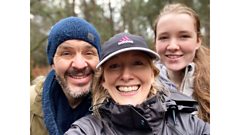Main content
What makes someone rescue (or leave) a person in danger?
When a young woman was killed in a brutal attack in New York in 1964, it was reported that not one of 38 witnesses intervened.
Although no evidence was found to support the story, it prompted decades of research to try and explain why bystanders do or don’t help in risky situations.
Dr Rachel Manning from Buckingham University, UK, explains how the case led to a theory called the ‘bystander effect’, which suggests that people are less likely to help if more people are present.
(Image: Woman running at night, Credit: Getty Images.)
Duration:
This clip is from
More clips from Health Check
-
![]()
The mental health impact of abortion restrictions
Duration: 04:53
-
![]()
Doctor turned author on writing his memoir
Duration: 02:52
-
![]()
Covid: 'I've been shielding from my family for almost 2 years'
Duration: 06:26
-
![]()
Long Covid: What we do and don't know
Duration: 08:49






